HUGIN software products including HUGIN Graphical User Interface, HUGIN Decision Engine and HUGIN app have been developed with financial support from the following companies and institutions (see also list of projects):
Acknowledgments
Acknowledgments
The development of the functionality concerning the (real-valued) functionnode type (introduced in HUGIN 7.3) has been sponsored by Danish mort-gage credit institution Nykredit Realkredit (www.nykredit.dk).
The development of the functionality concerning the discrete function node type as well as the “aggregate” and “probability” operators (introduced inHUGIN 7.7) have been sponsored by the research project “Operational risk in banking and finance.” The project is dedicated to strengthening management of operational risk in the banking and finance sector, including developing Basel II compliant operational risk measurement and managementtools in accordance with the Advanced Measurement Approach (AMA). The project is financed by the University of Stavanger and a consortium of Norwegian banks consisting of SpareBank 1 SR-Bank, SpareBank 1 SNN, Spare-Bank 1 SMN, Sparebanken Hedmark, and SpareBank 1 Oslo Akershus.
Ongoing projects

Reliable Electricity Distribution utilizing a Digital Twin based on eXplainable Artificial Intelligence
Reliable Electricity Distribution utilizing a Digital Twin based on eXplainable Artificial Intelligence (REDistXAI) is a project under the Eurostars-EUREKA Programme. It is funded by the Danish Innovation Fund and European Commission. REDistXAI will develop an eXplainable Artificial Intelligence (XAI) software platform based on Bayesian networks and apply it for novel applications in electricity distribution grids. The applications are grid fault-localisation, data quality detection, correction and completion for GridDatas DigitalTwin of distribution grids..
FACTS
Number of partners: 3
Main organisation:
GridData GmbH, Germany
www.griddata.eu
Partners:
HUGIN EXPERT A/S, Denmark
Aalborg University, Denmark
Funding:
REDistXAI project has received funding under grant agreement no 3150-00040B / project no 4748.
Start-up date: 01.05.2025
Completion: 30.04.2027
More informationn: https://vbn.aau.dk/da/projects/redistxai
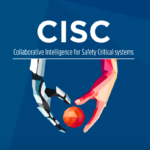
Collaborative Intelligence for Safety Critical systems
CISC is a Marie Curie Training Network funded by the European Commission to hire and train Early Stage Researchers (ESR) or PhD student as Collaborative Intelligence Scientists with the expertise and skillset necessary to carry-out the major tasks required to develop a Collaborative Intelligence system.
Publications: https://www.ciscproject.eu/publications/
FACTS
Number of partners: 17
Lead organisation:
Technological University Dublin:
TU Dublin | Technological University Dublin
CISC project has received funding from the European Union’s Horizon 2020 Research and Innovation Programme under the Marie Skłodowska-Curie grant agreement no. 955901.
Start-up date: 01.01.2021
Completion: 01.01.2025
Concluded projects
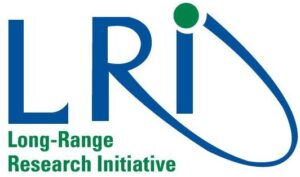
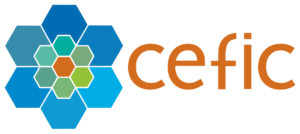
Strengthening Weight of Evidence for FET data to replace acute Fish Toxicity (SWiFT)
The Strengthening Weight of Evidence for FET data to replace acute Fish Toxicity (SWiFT) project has received funding through the Long-range Research Initiative (LRI) of THE EUROPEAN CHEMICAL INDUSTRY COUNCIL (Cefic) http://cefic-lri.org/.
The role of HUGIN in SWiFT is to deliver technology for Bayesian networks and to lead the development of the web-site interface to the Bayesian network model.
Project demo: http://swift.hugin.com/
FACTS
Number of partners: 6
Lead organisation
Norwgian Institute for Water Research (NIVA)
Principal Investigator: Adam Lillicrap, NIVA
Niva project web-site
LR funding: EUR 250.000
CEFIC-LRI PROGRAMME project web-site
Duration: Start-up date: 01.04.2020
Completion date: 31.03.2022
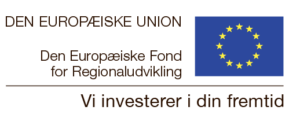

Funding LSI-ND SSP projects
Regional funds of the European Union through Life Science Innovation North
Denmark’s Sundhedsteknologiske Service Program: (https://www.lifescienceinnovation.dk/).
Startdato: 2018
Slutdat0: 2021

Funding LSI-ND SSP projects
Denmark’s Sundhedsteknologiske Service Program: (https://www.lifescienceinnovation.dk/).
Startdato: 2017
Slutdat0: 2017

Prædiktering af fremtidig behov under Serviceloven §83 og §83a vha AI-teknologi
Dette projekt vil anvende AI-teknologi til prædiktering af fremtidige behov for ydelser under Servicelovens §83 og §83a. Målet er at blive i stand til at forudsige et øget (eller reduceret) behov for hjælp med henblik på at etablere en tidlig og målrettet forebyggende indsats til gavn for borgeren, kommunen og samfundet.
De offentlige finanser er udfordret af et massivt demografisk pres på plejeområdet. Plejeområdet er en kommunal kerneopgave og det øgede demografisk pres betyder, at der er behov for effektiviseringer (eller en forøgelse af det offentlige forbrug) for at opretholde det nuværende niveau af ældreomsorg. Dette projekt skal udvikle en model til prædiktion af behov for ydelser under Servicelovens §83 og §83a med henblik på at sikre den rette pleje til rette tid. Det vil være med til at sikre, at ressourcerne allokeres til de rigtige ydelser.
Dette projekt udspringer af igangværende arbejde omkring brugen af AI-teknologi til identifikation af leverancer med høj risiko for afvigelser under Servicelovens §83 og §83a. Projektet har givet HUGIN og Hjørring Kommune øget indsigt i datagrundlaget og mulighederne for at anvende AI-teknologi i forbindelse med prædiktering af behov under Servicelovens §83 og §83a. Udgangspunktet for projektet er at prædiktere behov under Servicelovens §83 og §83a, men mulighederne i at være forudseende er ikke begrænset til Serviceloven.
Vi ønsker at tage skridtet fra monitorering og analyse af afvigelser mellem leverancer og bevillinger til prædiktion af behov for at kunne tilrettelægge en proaktiv indsats til gavn for borgeren, kommunen og samfundet.
For yderligere information: projektbeskrivelse hos LSI
Fakta
Deltagere: HUGIN EXPERT, TREAT Systems, Hjørring Kommune
Startdato: Januar 2022
Slutdato: November 2022

Forudsigelse af patientstrømme i akutmodtagelsen ved Aalborg Universitetshospital
Dette projekt har til formål at anvende AI til at prædiktere patientstrømme og ventetid i Akut- og Traumecenter ved Aalborg Universitetshospital med henblik på at reducere ventetiden, forbedre arbejdsmiljøet og øge effektiviteten.
Beskrivelse af idé
Formålet med dette projekt er at anvende AI til at prædiktere patientstrømme og ventetid i Akut- og Traumecenter (ATC) ved Aalborg Universitetshospital med henblik på at reducere ventetiden, forbedre arbejdsmiljøet og øge effektiviteten. Projektet bygger videre på et allerede etableret samarbejde, som har udviklet en software-prototype til prædiktion af patientstrømme i ATC ved Aalborg Universitetshospital. Prædiktion af patientstrømme og ventetid i ATC kan fx medvirke til at mindske tidspresset for personalet, at koncentrere ressourcerne, når udfordringerne er størst, samt at give patienterne en bedre oplevelse af service. Arbejdet i dette projekt har fokus på at videreudvikle softwaren til at understøtte prædiktion af ventetid fra et patientperspektiv samt produktmodne den samlede løsning til udbredelse i andre akutmodtagelser. Projektet inkluderer en validering i praksis og en markedsanalyse, som skal lede til udarbejdelse af en Go-To-Market strategi for løsning.
Fakta
Deltagere: HUGIN EXPERT, Dataproces, Aalborg Universitet, Aalborg Universitetshospital
Startdato: Januar 2022
Slutdato: November 2022


Forudsigelse af patientstrømme i akutmodtagelsen ved Aalborg Universitetshospital
Beskrivelse af idé
Formålet med dette projekt er at udvikle en software-prototype til at understøtte vagtplanlægningen på akutmodtagelsen ved Aalborg Universitetshospital (Aalborg UH) med henblik på at sikre en bedre balance mellem kapacitet og behov. Projektets målsætning er bedre patientforløb med øget patientsikkerhed og reduceret ventetid, bedre udnyttelse af de økonomiske ressourcer og et bedre arbejdsmiljø for medarbejderne.
Vagtplanlægning på akutmodtagelsen ved Aalborg Universitetshospital er en kompliceret opgave. For at opretholde et effektivt sundhedsvæsen samt sikre en høj grad af patientsikkerhed i akutmodtagelsen er det nødvendigt, at vagtplanlægningen sikrer, at det nødvendige antal medarbejdere er tilstede, når det kræves. Tilsvarende er det vigtigt ikke at have overbemanding i perioder med mindre aktivitet for at sikre en økonomisk effektiv udnyttelse af ressourcerne. Projektet sigter mod at understøtte vagtplanlægning ved at forudsige patientstrømme på baggrund af data samt viden og erfaring.
Projektet bygger på en ny anvendelse af eksisterende teknologi (kendt som Bayesianske netværk) på forskellige videns-, erfarings- og datakilder samt udvikling af ny software til at understøtte vagtplanlægningen. Tilgangen er unik i forhold til at kombinere data med eksisterende viden og erfaring til at lave bedre forudsigelser af patientstrømme. Resultatet af projektet vil være en softwareprototype, der vil kunne anvendes af Aalborg UH og som vil være parat til markedstest.
For yderligere information: projektbeskrivelse hos LSI
Fakta
Deltagere: HUGIN EXPERT, Dataproces, Aalborg Universitet, Aalborg Universitetshospital
Startdato: Oktober 2019
Slutdato: Marts 2021


Prædiktering af fremtidig behov under Serviceloven §83 og §83a vha AI-teknologi
Dette projekt vil anvende AI-teknologi til prædiktering af fremtidige behov for ydelser under Servicelovens §83 og §83a. Målet er at blive i stand til at forudsige et øget (eller reduceret) behov for hjælp med henblik på at etablere en tidlig og målrettet forebyggende indsats til gavn for borgeren, kommunen og samfundet.
De offentlige finanser er udfordret af et massivt demografisk pres på plejeområdet. Plejeområdet er en kommunal kerneopgave og det øgede demografisk pres betyder, at der er behov for effektiviseringer (eller en forøgelse af det offentlige forbrug) for at opretholde det nuværende niveau af ældreomsorg. Dette projekt skal udvikle en model til prædiktion af behov for ydelser under Servicelovens §83 og §83a med henblik på at sikre den rette pleje til rette tid. Det vil være med til at sikre, at ressourcerne allokeres til de rigtige ydelser.
Dette projekt udspringer af igangværende arbejde omkring brugen af AI-teknologi til identifikation af leverancer med høj risiko for afvigelser under Servicelovens §83 og §83a. Projektet har givet HUGIN og Hjørring Kommune øget indsigt i datagrundlaget og mulighederne for at anvende AI-teknologi i forbindelse med prædiktering af behov under Servicelovens §83 og §83a. Udgangspunktet for projektet er at prædiktere behov under Servicelovens §83 og §83a, men mulighederne i at være forudseende er ikke begrænset til Serviceloven.
Vi ønsker at tage skridtet fra monitorering og analyse af afvigelser mellem leverancer og bevillinger til prædiktion af behov for at kunne tilrettelægge en proaktiv indsats til gavn for borgeren, kommunen og samfundet.
For yderligere information: projektbeskrivelse hos LSI
Fakta
Deltagere: HUGIN EXPERT, TREAT Systems, Hjørring Kommune
Startdato: April 2020
Slutdato: November 2020


Identifikation af leverancer med høj risiko for afvigelser under Serviceloven §83 og §83a
Beskrivelse af idé
Den kommunale forvaltning i Danmark har en meget stor grad af digitalisering i forhold til andre lande, som vi normalt sammenligner os med. På trods af den store grad af digitalisering benyttes kunstigintelligens og maskinlæring kun i begrænset udstrækning til at automatisere tids- og ressourcekrævende opgaver. Det giver en unik mulighed for at udnytte kunstig intelligens og maskinlæring til beslutningsstøtte til gavn for borgeren, kommunen og samfundet.
En automatisk proces kan være med til at sikre at uoverensstemmelser mellem leverede og bevilgede ydelser til borgerne bliver identificeret og rettet tidligst muligt. Det kan desuden medvirke til at eliminere en evt. mistillid mellem leverandør og bevillingsgiver. Ved uoverensstemmelser i leverancerne er der også risiko for, at der opstår et brud på tilliden mellem leverandør og aftager.
En løsning til identifikation af uoverensstemmelser i leverancerne kan have stor værdi for den enkelte borger (evt. afvigelser korrigeres tidligere, hvilket giver en bedre kvalitet for borgeren), kommunen (reducerede omkostninger, bedre udnyttelse af ressourcer og overblik over leverancer i forhold til bevilgede ydelser) og samfundsøkonomisk via direkte og indirekte besparelser.
Den store grad af digitalisering i den kommunale forvaltning giver en unik chance for at udnytte kunstig intelligens og maskinlæring teknologi til at udvikle løsninger, som kan erstatte tunge manuelle processer, sikre bedre forebyggelse og en mere ensartet og effektivudnyttelse af eksisterende ressourcer og som kan understøttesagsbehandling af bevillinger. Derfor ønsker vi at gennemføre dette pilotprojekt, som første trin mod udbredt anvendelse af kunstig intelligens og maskinlæring indenfor den kommunale forvaltning.
For yderligere information: projektbeskrivelse hos LSI
Fakta
Deltagere: HUGIN EXPERT, Dataproces, Aalborg Universitet, Aalborg Universitetshospital
Startdato: Oktober 2019
Slutdato: Marts 2021
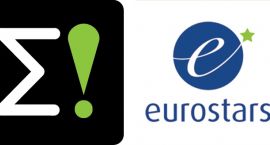
CytoCam
HUGIN participates in CytoCam, a project under the Eurostars-EUREKA Programme. CytoCam aims to reduce the number of people who fall ill due to Campylobacter infected chickens through the development of an innovative feed additive from transgenic barley seeds. The feed additive contains a bioactive protein that can significantly reduce the 3-log Campylobacter count in the chicken gut. HUGIN will create a cost/reward decision-making application that can demonstrate the benefits of the feed to farmers.
For more information visit: https://www.eurostars-eureka.eu/project/id/10045
Project demo: http://cytocam.hugin.com/
FACTS
Number of partners: 2
Countries involved: 2
Budget: Total budget of € 1 068 670
Start date: May 2016
End Date: May 2019
Duration: 36 months
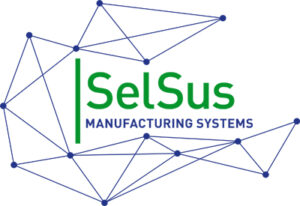
SelSus
The SelSus project to create life-long maintenance systems for manufacturers started in September 2013 and involves 14 participants from the EU. Scheduled to finish in August 2017, the total cost of the project is 7,374,295 Euros, of which the European Union contribution is 5,397,345 Euros.
HUGIN Expert is the project’s technology provider, and supplies the self-diagnosis models and algorithms for self-maintenance, renovation and repair. http://www.selsus.eu/
Project demo: http://selsus.hugin.com/
FACTS
Number of partners: 14
Budget: € 5 397 345 European Union contribution, total budget of € 7 374 295
Duration: September 2013 – August 2017
Coordinator: Roland Wertz, Fraunhofer
Administrative contact: Walter Krause

OpenNESS
The project, OpenNESS (Operationalization of Natural Capital and Ecosystem Services: From Concepts to Real-World Applications) aims to combine innovation with nature to support a more sustainable worldwide future. Starting in December 2012, this EU-funded project consists of research institutes from 22 European countries, 4 non-European countries and 10 SMEs. Scheduled to conclude in May 2017, HUGIN Expert provides advanced modelling technology for the project. http://www.openness-project.eu/
Project demo: http://openness.hugin.com/
FACTS
Number of partners: 34
Budget: € 8 999 193 European Union contribution, total budget of € 11 489 110
Duration: December 2012 – May 2017
Coordinator: Eeva Furman, Finnish Environment Institute (SYKE)
Administrative contact: Maria Koski
European Commission: CORDIS link
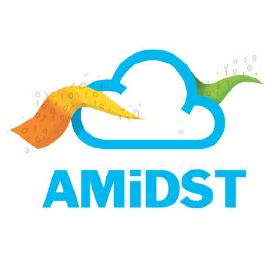
AMiDST
AMIDST – Analysis of MassIve Data STreams
FP7-2013-ICT-11 project 619209, Seventh framework programme
HUGIN EXPERT is collaborating with a German car manufacturer, a Spanish bank and a Norwegian IT company in the EU-funded project AMiDST. The aim of AMiDST is to develop early warning systems: systems that can alert motorists to collisions, banks to risk of losses and oil companies to potential drilling problems. The project also involves Aalborg University and universities in Norway and Spain.
Project website: http://amidst.eu/
Project demo: http://amidst.hugin.com/
FACTS
Number of partners: 7
Countries involved: 4
Budget: € 2 762 000 European Union contribution, total budget of € 3 922 756
Duration: January 2014 – December 2016
RTD Manager and Deputy Coordinator: Anders L Madsen, HUGIN EXPERT A/S
Administrative Coordinator: Anne Bock, Aalborg University

CamVac
CamVac – Campylobacter vaccination of Poultry
Danish Strategic Research Council project CamVac (contract 09-067131)
CamVac is funded by the Danish Strategic Research Council (Det Strategiske Forskningsråd). The aim of the project is to develop a cost-effective vaccine strategy, based on three current candidate vaccines and delivery systems.
http://curis.ku.dk/ws/files/106806762/IFRO_Report_227.pdf
Project demo: http://camvac.hugin.com
FACTS
Duration: 48 months
Start date: 2010-03-01
End date: 2013-02-28
Project cost: 14.8 million DKK
Coordinator:
Iben Bang-Berthelsen DTU FOOD DENMARK
The Danish partners are:
DTU FOOD
DTU VET
Dianova A/S
KU LIFE
TD Vaccines A/S
HUGIN EXPERT A/S
The two international vaccine groups are:
Utrecht University (Netherlands)
University of Arizona (USA)
The two subcontractors are:
GMU (Indonesia) & EMBRAPA (Brazil)

Biotracer
FP6-2006-FOOD-036272 project, Sixth framework programme
BIOTRACE IP is an Integrated Project within the European Union 6th Framework Programme under the European Research area of Food Quality and Safety.
The objective of BIOTRACER is to create tools and models for the improvement of tracing accidental and deliberate microbial contamination of feed and food, including bottled water.
Project demos: http://biotracer.hugin.com/ , http://milk.hugin.com
FACTS
Number of partners: 46
Countries involved: 24, including 4 INCO countries
Budget: €11 million European Commission, total budget of €15 million
Duration: January 2007 – December 2010
Acting Coordinator: Solveig Bouquin, National Food Institute-Technical University of Denmark
European Commission: CORDIS link

HiTS/ISAC
Prepatory action 113700 on ‘Enhancement of the European industrial potential in the field of Security Research 2004-2006’ (PARS)
The vision of the proposed project HiTS/ISAC is a more secure Europe through prevention of terrorism and organized crime. It addresses the interoperability of intelligence services to exchange information on suspicious activities in order to enable information analysis and fusion from different sources.
The objective of HiTS/ISAC is to enable information analysis and fusion from many different sources, through secure cross-border on-line group co-operation between authorities, in order to detect and provide early warnings for suspicious activities, be it communication between suspected criminals, or anomalous movement of persons, goods or money, etc.
FACTS
Duration: 22 months
Start date: 2006-06-01
End date: 2008-03-31
Project cost: 1.74 million euro
Coordinator:
Jan Larsson, Saab AB SWEDEN
Partners:
Saab AB SWEDEN
HUGIN EXPERT A/S DENMARK
EADS Defence and Security System SA FRANCE
TeliaSonera FINLAND
Swedish Defence Research Agency SWEDEN
EADS Secure Networks FINLAND
TietoEnator Alise, SIA Latvia
Denodo Technologies S.L. SPAIN
Cybernetica AS ESTONIA
UAB ERP LITHUANIA
Military University of Technology POLAND

Advocate II
IST-2001-34508 project, fifth framework
As Autonomous Vehicles are currently undergoing a transition from a research tool to real application, they are expected to work more reliably and safely.
The aim of ADVOCATE II is to design and develop an architecture to increase the performance of unmanned underwater and ground robotic applications.
The objectives are to increase the safety for the system itself as well as the environment, to increase automation and to increase efficiency and reliability of the system. The main objective is to have a better management of uncertainty in robots by the use of intelligent diagnosis and control software, but without too specific non-reusable developments.
FACTS
Duration 37 months
Start date: 2002-04-01
End Date: 2005-04-30
Project cost: 3.43 million euro
Coordinator:
Olivier LAHILLE, GETRONICS DECAN MARSEILLE
Partners:
GETRONICS DECAN MARSEILLE
HUGIN EXPERT A/S DENMARK
INNOVA SPA ITALY
EMOTIVE FRANCE
UNIVERSIDAD POLITECNICA DE MADRID SPAIN
INSTITUT FRANCAIS DE RECHERCHE POUR L’ EXPLOITATION DE LA MER FRANCE
UNIVERSIDAD DE ALCALA DE HENARES SPAIN
ATLAS ELEKTRONIK GMBH GERMANY
European Commission: CORDIS link

Advocate I
ESPRIT 4 Project 28584 ADVanced On-board diagnosis and Control of semi-Autonomous mobile sysTEms (ADVOCATE)
Unmanned Underwater Vehicles (UUVs) need to become more and more intelligent to avoid inopportune mission abortion and to perform more complex operations. ADVOCATE introduces artificial intelligence for diagnosis, recovery and re-planning, by merging different techniques into UUVs. To avoid too specific non-reusable developments, ADVOCATE is based on a distributed architecture (CORBA norm), and a generic communication protocol between the different modules.
FACTS
Duration: 24 months
Start date:1998-09-01
End date: 2000-08-31
Project cost: 1.6 million Euro
Coordinator:
Damien ROLAND, Decan Ingenia Sa FRANCE
Partners:
Decan Ingenia Sa FRANCE
IFREMER – INSTITUT FRANÇAIS DE RECHERCHE POUR L’EXPLOITATION DE LA MER FRANCE
UNIVERSIDAD POLITECNICA DE MADRID SPAIN
Innova Srl ITALY
HUGIN EXPERT A/S DENMARK
STN ATLAS ELEKTRONIK GMBH GERMANY
European Commission: CORDIS link

BAKE/Bayesian Knowledge Extractor
ESPRIT 4 project 29105, Fourth Framework Programme – BAKE/Bayesian Knowledge Extractor
The aim of this project is to develop an integrated environment able to extract Bayesian Belief Networks (BBNs) from databases.
FACTS
Duration: 18 months
Start date: 1998-12-28
End date: 2000-06-27
Project cost: 0.26 million euro
Coordinator: HUGIN EXPERT A/S
Participants:
HUGIN EXPERT A/S DENMARK
Open University UNITED KINGDOM
Aalborg Universitiet DENMARK
CONSORZIO DI BIOINGEGNERIA E INFORMATICA MEDICA ITALY
European Commission: CORDIS link

PRONEL
ESPRIT 4 Project 28932, Fourth Framework Programme
The aim of the PRONEL project was to develop a prototype of a data mining tool that were able to extracting Bayesian network models from data in “collaboration” with an domain expert. This was achieved and a software prototype was developed. This prototype is available for download.
Download Pronel User Guide (PDF)
The functionality of the Pronel BN learner demo has been included in the Hugin tool.
FACTS
Duration: 18 months
Start date: 1998-09-01
End date: 2000-02-29
Project cost: 1.398 million Euro
Coordinator:
Jacques GOUIMENOU Tiga Technologies FRANCE
Partners:
Tiga Technologies FRANCE
HUGIN EXPERT A/S DENMARK
Siemens AG GERMANY
Schlumberger Industries S.A. FRANCE
European Commission: CORDIS link

Serene
ESPRIT 4 Project 22187, Fourth Framework Programme
The SERENE Project(SafEty and Risk Evaluation using bayesian NEts)
The SERENE project produced a decision support method, with a supporting tool, for quantifying safety of complex systems using Bayesian Networks. The method helps safety analysts and engineers combine diverse forms of evidence together in order to predict safety or risk at any stage in the development life-cycle.
The method has now been applied in a number of case studies, as part of the project itself, and in a number of commercial projects.
FACTS
Duration: 30 months
Start date: 1996-06-01
End date: 1998-11-30
Project cost: 1.8644 million Euro
Coordinator:
William MARSH ERA Technology UNITED KINGDOM
Partners:
ERA Technology UNITED KINGDOM
HUGIN EXPERT A/S DENMARK
CITY UNIVERSITY UNITED KINGDOM
Pgcc Technologie FRANCE
Electricite de France Direction des Etudes et Recherches FRANCE
TECHNISCHER ÜBERWACHUNGS-VEREIN NORD E.V. GERMANY
European Commission: CORDIS link

EMG - Knowledge-Based Assistant for Electromyography (esprit)
ESPRIT I, Project 599, First Framework Programme
EMG – Knowledge-Based Assistant for Electromyography
The aim of the EMG project was to develop a knowledge-based assistant to support physicians in all stages of an electromyographical (EMG) examination of patients with neurological diseases. The objective was to produce a system sufficiently robust to withstand clinical trials in a neurophysiological laboratory. An expert system shell based on causal-probabilistic reasoning, HUGIN, has been developed and is now available on the market.
HUGIN EXPERT A/S is a spin-off from this project.
FACTS
Duration: 63 months
Start date: 1984-12-01
End date: 1989-02-01
Project cost:
Coordinator:
AXION A/S DENMARK
Partners:
RESEARCH AND DEVELOPMENT INSTITUTE (NUC) DENMARK
Institute of Neurology UNITED KINGDOM
JUDEX DATASYSTEMER A/S DENMARK
Logica Ltd UNITED KINGDOM
European Commission: CORDIS link

